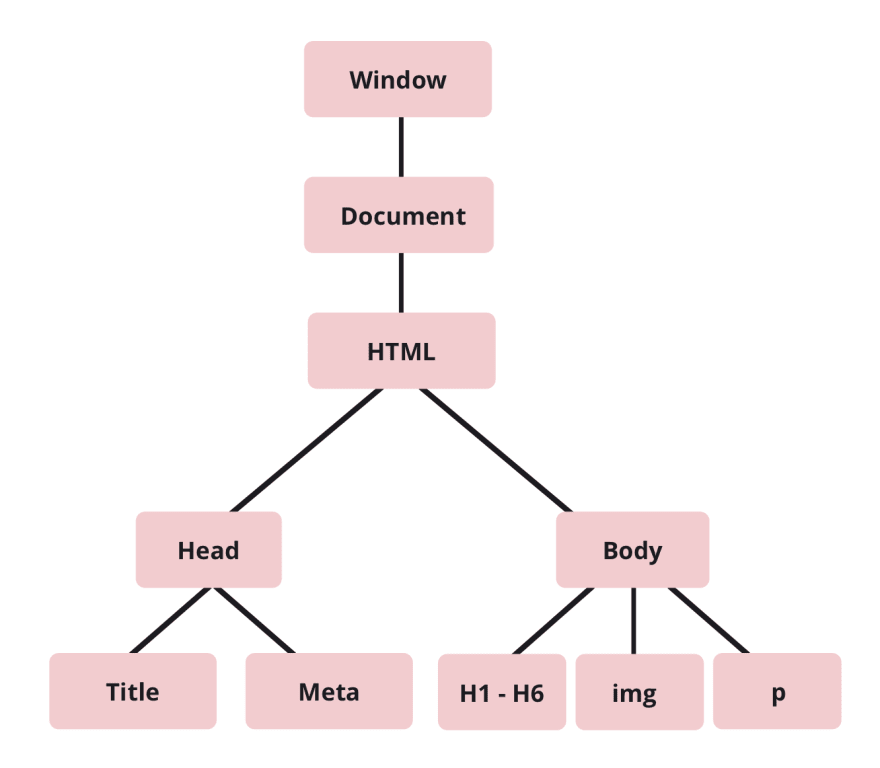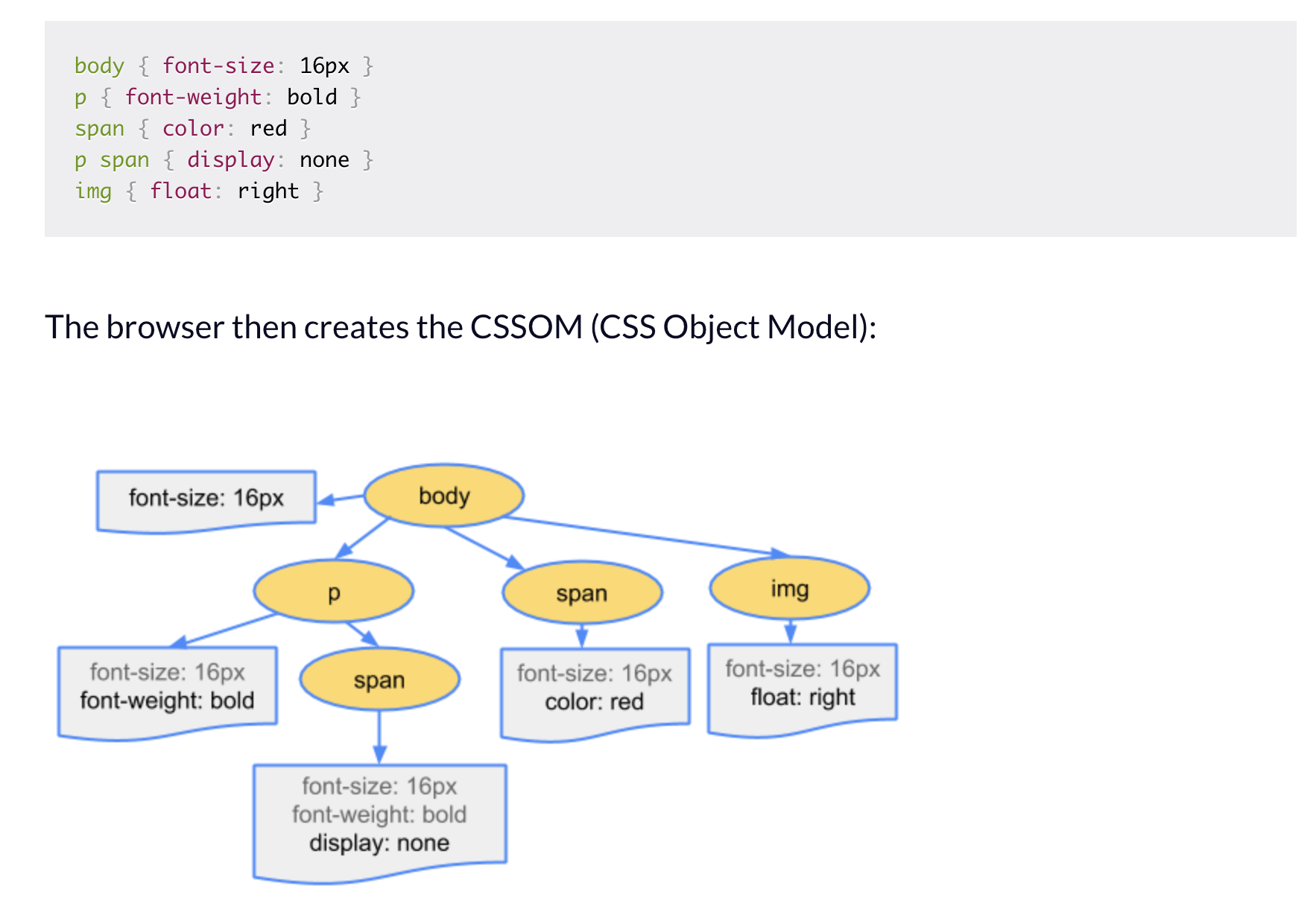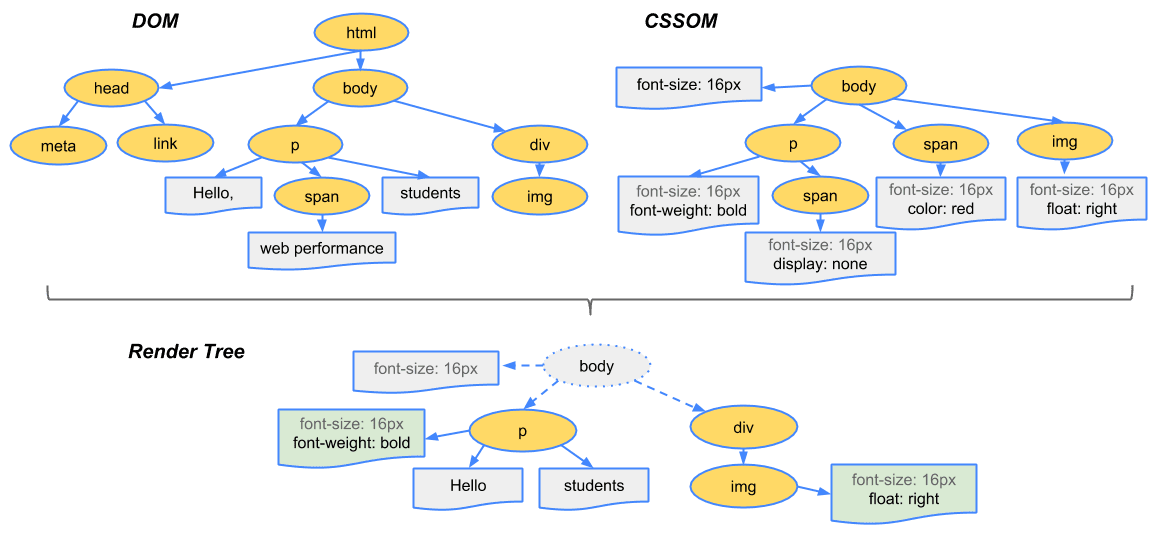Unlocking the CSSOM: How Browsers Render Your Web Pages
 Yash Thakur
Yash Thakur
Understanding how web browsers render web pages involves grasping the intricacies of the CSS Object Model (CSSOM), its interaction with the Document Object Model (DOM), and the role of JavaScript in dynamic content manipulation. In this blog post, we will explore these concepts in depth, shedding light on how browsers transform HTML, CSS, and JavaScript into visually appealing web content.
Introduction
When you open a webpage in your browser, it undergoes a complex process before you see it displayed on your screen. At the core of this process are three fundamental models: the Document Object Model (DOM), the CSS Object Model (CSSOM), and JavaScript. Together, these models form the foundation for rendering web pages as we see them.
The Document Object Model (DOM)
The DOM represents the hierarchical structure of an HTML document as a tree of nodes. Each node corresponds to an element, attribute, or text within the HTML markup. This tree structure is crucial because it allows JavaScript and other scripting languages to interact with the content and structure of the webpage dynamically.
In the DOM tree, elements such as <html>, <head>, <body>, <div>, <p>, and others are represented as nodes. These nodes are interconnected, forming a structure that reflects the nesting and relationships defined in the HTML document.

The CSS Object Model (CSSOM)
While the DOM represents the structure and content of the webpage, the CSSOM focuses on the styles applied to each element in the DOM. The CSSOM is constructed by the browser as it parses and processes the CSS stylesheets associated with the webpage.
Each CSS rule in a stylesheet defines how specific elements should be styled. These rules are applied to elements in the DOM based on selectors such as element names, classes, IDs, or attribute selectors. The CSSOM organizes and computes these styles, creating a tree-like structure that mirrors the DOM but focuses on styling information.

JavaScript and Dynamic Interactions
JavaScript plays a crucial role in manipulating both the DOM and the CSSOM dynamically. It can modify the content and structure of the DOM, change CSS styles applied to elements, handle user interactions, and fetch data asynchronously from servers.
Here’s how JavaScript interacts with the DOM and CSSOM:
DOM Manipulation: JavaScript can add, remove, or modify elements and attributes within the DOM tree. This dynamic manipulation allows for real-time updates to webpage content based on user interactions or data changes.
CSSOM Interaction: JavaScript can access and modify CSS styles applied to elements in the DOM. This capability enables developers to create interactive user interfaces with responsive design and animations.
Creating the Render Tree
The culmination of the DOM, CSSOM, and JavaScript interactions is the creation of the Render Tree. The Render Tree is a combined representation that the browser uses to determine the layout and visual presentation of the webpage. It includes only the elements that are necessary for rendering and their computed styles from the CSSOM, taking into account any dynamic changes made by JavaScript.
The process of creating the Render Tree involves:
DOM Construction: The browser parses the HTML document and constructs the initial DOM tree.
CSSOM Construction: Simultaneously, the browser parses and processes the CSS stylesheets to create the CSSOM.
JavaScript Interaction: JavaScript dynamically manipulates the DOM and CSSOM, influencing the final structure and styles used to create the Render Tree.
Combination into the Render Tree: The browser matches CSS rules to elements in the DOM, incorporating any dynamic changes made by JavaScript to create a Render Tree optimized for rendering efficiency.

Conclusion
By understanding the CSS Object Model (CSSOM), its integration with the Document Object Model (DOM), and the role of JavaScript, developers gain insights into how browsers render web pages. This knowledge enables them to optimize CSS stylesheets, improve webpage performance, create interactive user interfaces, and troubleshoot rendering issues effectively.
Next time you're working on styling and scripting a webpage, consider the journey from the DOM to the CSSOM, influenced by dynamic JavaScript interactions. Each step plays a vital role in ensuring a seamless user experience and visually compelling web content.
Subscribe to my newsletter
Read articles from Yash Thakur directly inside your inbox. Subscribe to the newsletter, and don't miss out.
Written by
